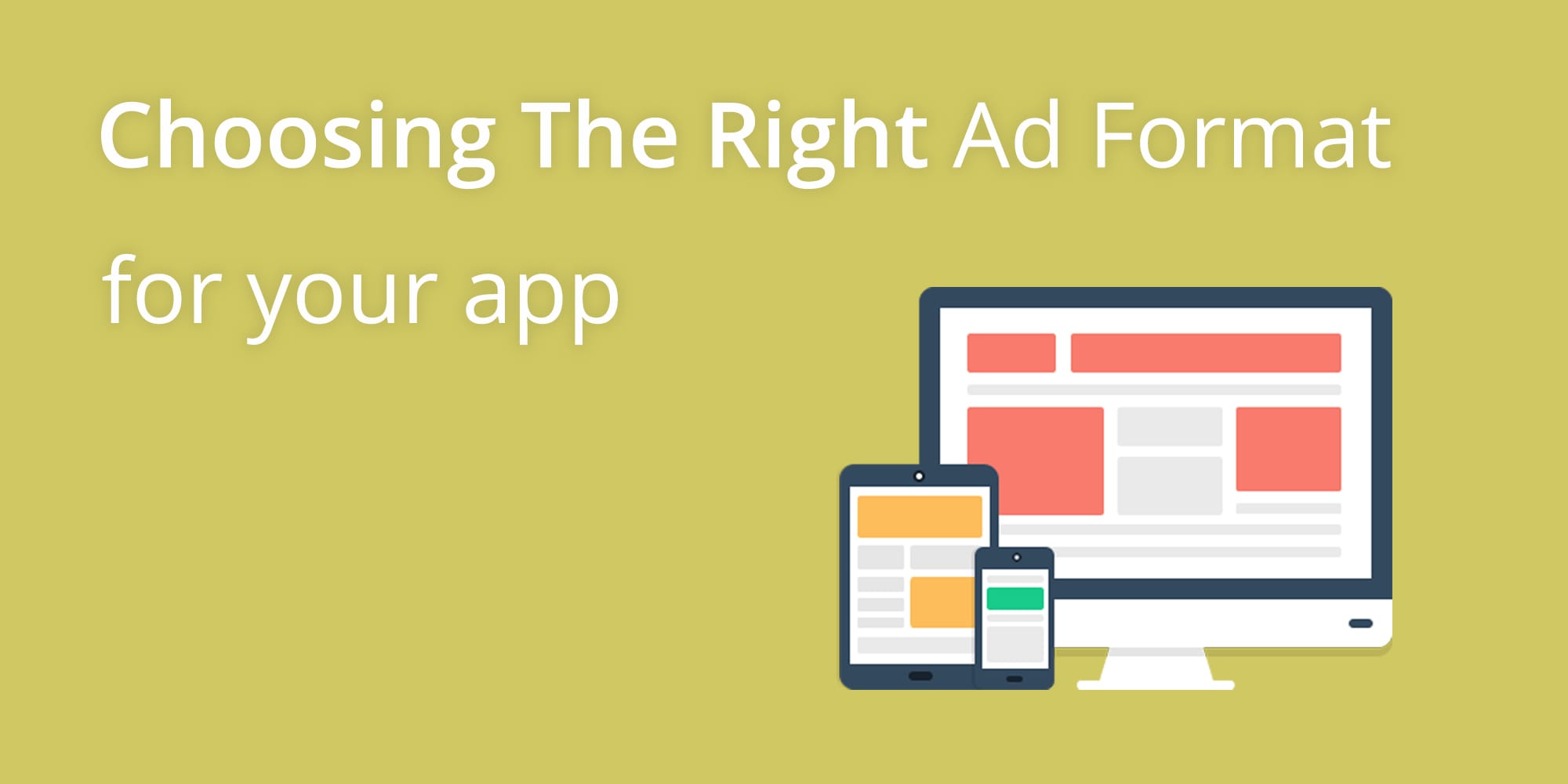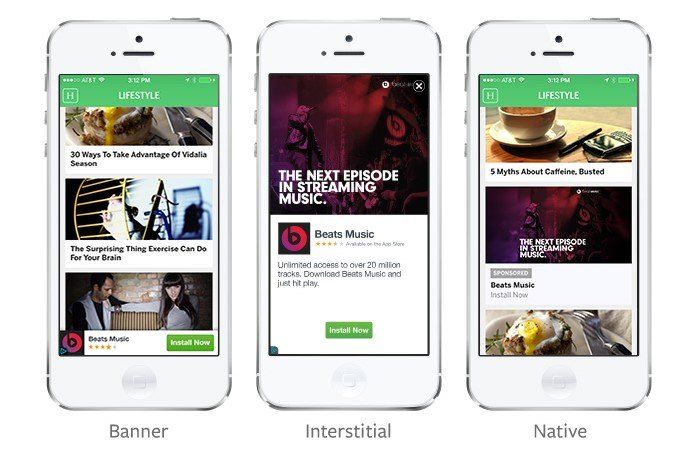The one question you must answer before choosing the ad format for your mobile app

There’s a lot of mixed-messaging right now about the efficacy of mobile app ads. Some sources claim mobile app ads are the secret to making money as an app developer. Yet other sources claim that in-app ads have almost no positive impact, especially given how many people abandon applications featuring in-app ads.
Nearly one in six app users choose to uninstall explicitly and solely because there are too many in-app ads - and up to one-quarter of users uninstall because of some combination of mobile app ads and other features (like notifications) - mobile developers are justifiably anxious.
Choosing to pursue new mobile ad revenue streams and, specifically, choosing the in-app ad format that best suits a product and its users is essential to generating any kind of meaningful mobile ad revenue. That said, choosing the best in-app ad format can be easy - you just have to know the right question to ask!
A Brief Snapshot Of In-App Ad Format Types
- Banner ads: Quarter- or half-page in-app ads that partially overlay the screen (sometimes impeding access to app elements) during app use.
- Native Ads: In-app ads that integrate with the look and feel of the app, like sponsored/monetized character skins, power ups, and other monetized assets.
- Static Image Ads: Full-page interstitial landscape or portrait ads that users cannot close/navigate away from until they have stayed on-screen for a predetermined amount of time.

- Video Ads: Like static image ad formats, video ad formats take on full-screen landscape or portrait presentations and remain visible (without the option of navigating away) for a certain period of time.
- Playable Ads: An interactive ad format that requires users to engage with full-page ads a certain number of times, like playing a brief intro level to a game; can be stand alone in-app ads or appear at the end of a video ad.
Which is more important to you: mobile ad revenue or user experience?
If your primary goal is to increase your mobile app’s profits by hosting in-app ads, and your app is popular but has a low retention rate (people download it but don’t keep it very long), then you’ll want to choose an ad format with high visibility that pays per-mile or per-view. Banner ads present the best option in this case, as they’re the most-viewed. Banner ads have the poorest click through rate (CTR) of any in-app ad format and cause damage to user experience, if you’re not compensated per click and your user experience is short-lived anyway, these don’t present significant risks to your existing relationship with users.

If you’re looking for more balance between user experience and in-app ad revenues, look for an ad format with a high CTR that pays per-click. That is, you should use an in-app ad format that compensates you every time a user clicks on the ad, regardless of whether they purchase anything from the advertiser. The best ad format for you will be either static image or video mobile app ads. That’s because these in-app ad formats have a much higher CTR than banner ads and native ads, but do not prompt users to navigate away from your app as often as playable ads (after all, you can only generate mobile ad revenue if your users stick around to view more ads). That said, native and playable ads create the most positive user experiences and are least likely to be off-putting. So, if you value user experience more than mobile ad revenue, it may be worthwhile to risk lowering in-app ad CTR with native ads or increasing navigation away from your app with playable ads.
What’s more, while CTR is the most important element of choosing from among the different in-app ad formats for most people, an often-unconsidered element of hosting in-app ads is their effect on app performance and the demands they make on users’ mobile data. In recent years, research has shown that as much as 79% of app users’ data usage goes towards both mobile and in-app ads. The bigger and more complex the in-app ad, the more data it will require to run on top of what the app already needs. So app developers and producers looking to prioritize user experience should explore native in-app ad formats more than any playable ad format, as native ads minimize the amount of extra data and bandwidth required by the app.




